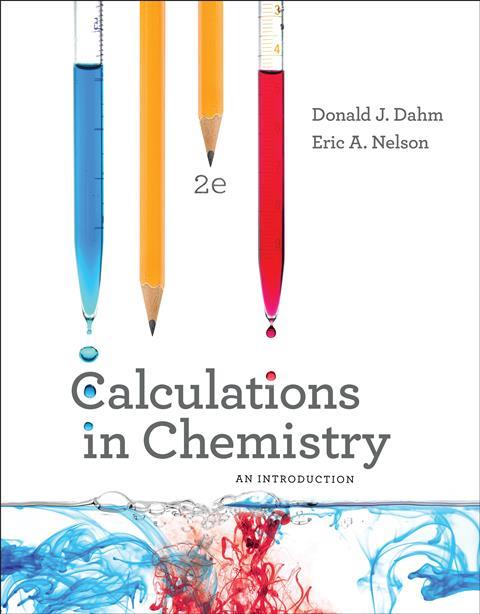Packed with questions and problems for undergraduate students, but heavy on US terminology
Donald J Dahm and Eric A Nelson
W M Norton & Co.
2017 | 544 pp | £36.00 (PB)
ISBN 9780393284201
Reviewed by Paul Yates
amzn.to/2GnPVXx
Donald J Dahm and Eric A Nelson
W M Norton & Co.
2017 | 544 pp | £36.00 (PB)
ISBN 9780393284201

Books on mathematics in chemistry can look like maths books or chemistry books. This textbook, for first year undergraduates, is firmly in the latter category, but unusually starts off with a section on learning chemistry and effective ways to study. The note to students at the start of the book outlines the equipment that will be needed for study, which goes beyond the inevitable scientific calculator and includes index cards and sticky notes. These are referred to throughout the text.
The book has a number of distinctive features to commend it. Much of the first chapter specifically precludes use of the calculator, and timed mental arithmetic is stressed as being important. The authors emphasise that there is a need to memorise some material. The use of flashcards is introduced in the chapter on the metric system where they are stated to be good for learning simple rules and definitions. Their use is then compared with the use of mnemonics and other phrases.
Calculations covers the mathematics required to study physical chemistry at the pre-calculus level. This culminates in a treatment of natural logarithms and exponentials in the final chapter on nuclear chemistry. The book also contains several types of questions for students. ‘Try it’ questions are intended to engage students in problem solving and are accompanied by answers in the text. Practice problems associate new and prior knowledge; there are detailed answers for these at the end of each chapter. Review quizzes appear at the end of each chapter. The book also comes with access to the proprietary Smartwork5 online homework system.
It is clear in the preface for instructors that the book is very US focused. This, along with the US spelling and section on metric conversions, may be enough to dissuade those from other countries from recommending it.
Purchase Calculations in chemistry: an introduction from Amazon









1 Reader's comment